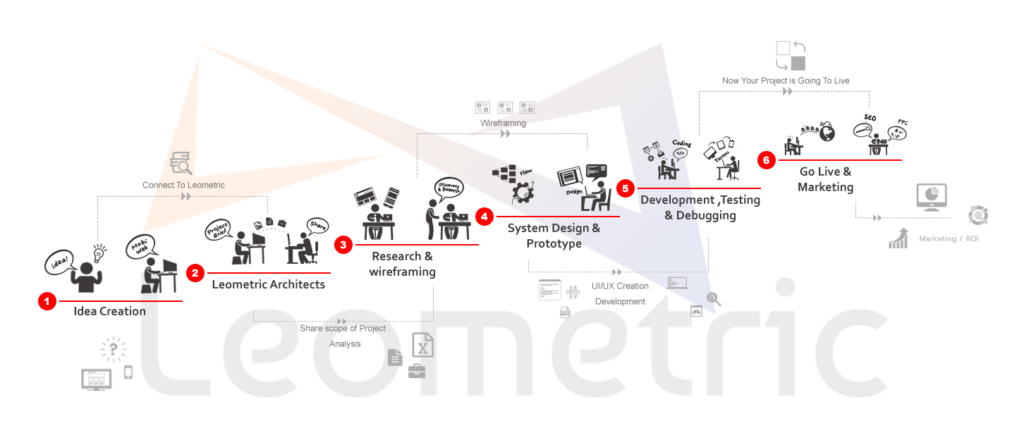Why methodology matters
Building products is a collaborative process involving many functional groups. Cross-functional teams need to work together systematically to deliver value efficiently and effectively. Using a common methodology helps drive success by providing a clear set of guidelines for how work will get done.
The methodology you use is typically set by your organization. It should be embraced by all groups involved in building and delivering products — such as engineering, IT, product management, and project management. While your role and responsibilities as a product management will not be impacted materially by the methodology your company chooses, it may affect how you build the product roadmap. This guide explains some of the most commonly used methodologies and how each one applies to product management.
Complete Process That Includes
Wire-framing of complete project along with analysis is carried out.
Interactive client communication to achieve successful results.
Elegant design of the project in accordance with user interface depiction with click-able prototypes.
Decision about Framework design and duration of project by our experts.
Brief layout of work procedure with targeted milestone within stipulated time.
Architectural enhancement by technical teams combining all aspects of project.
The existing prototypes during previous phases are coded, programmed and modified during this phase.
Successive execution of technical coding steps according to the set milestones.
Collaboration of technical aspects to deliver efficient product.
It is a post development phase necessary for quality check.
At each and every milestone the testing process is crept in by our expert team of Quality Assurance.
Optimized results are achieved at the end of testing phase to launch the final product.
The imperative phase of entire methodology process is launching of the finalized product from client in the market.
Becoming live online is final touch to the finish of the project sustenance.






